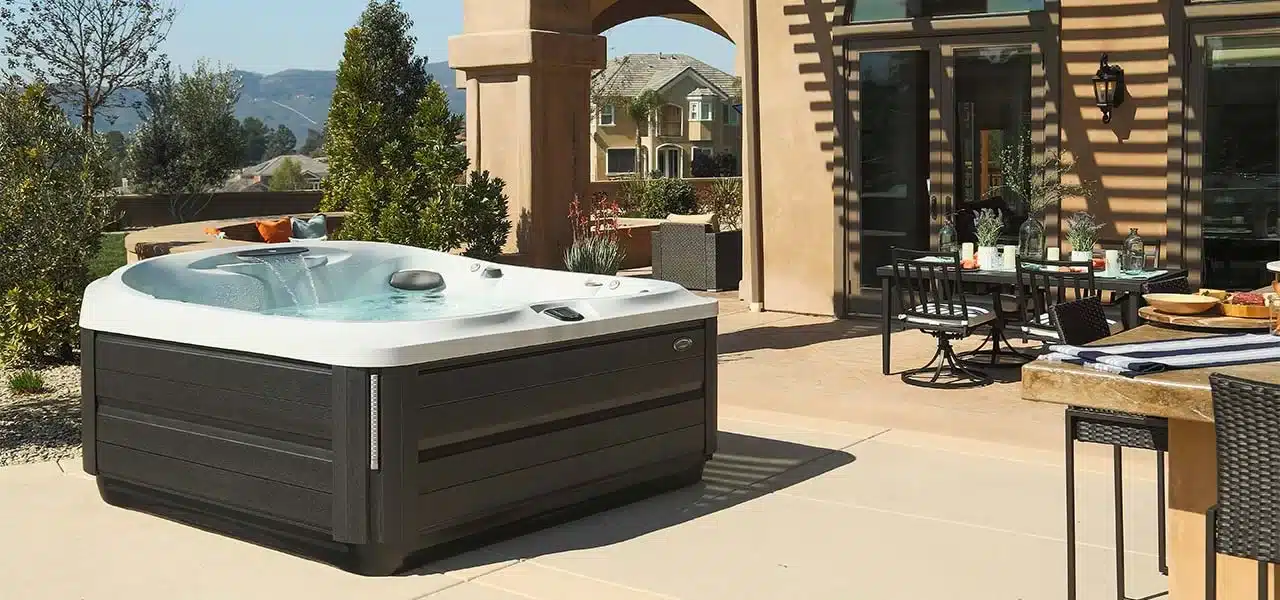FREE Standard Shipping On All Orders $100 or More!*

Spa and Hot Tub Troubleshooting Guide
Many find overall maintenance more manageable for hot tubs than pools due to their smaller size. But with the complexities of water chemistry and the nature of electronic spa components, troubleshooting spa and hot tub problems can be intimidating. But don't fret! If you find your hot tub isn't heating, it's making odd noises, or it's not performing as usual, this comprehensive guide can help address common spa and hot tub issues and help you find practical solutions.
Spa Shutdown: No Lights, No Power
One of the most frustrating problems spa owners face is when their spa shows no signs of power — no lights, no functions. If your spa is completely dead, the first step in troubleshooting this issue is to check the circuit breaker for the outlet the spa is plugged into. Should you find that the switch has tripped, switch it fully to the "off" position, then back to "on." If the breaker is not tripped, check for any GFCI electrical outlets on the same circuit. These outlets may be located under the spa or near the spa control pack. If the test button popped out, press the reset button to restore power. If this doesn't fix the issue, you may need to connect with a hot tub repair professional or an electrician for more advanced diagnostics.
Spa Runs, But Heater Isn't Working
If the spa is operating but the water remains cold, there are several potential causes. First, turn the thermostat up, then check to see if the heating indicator light is on. A dirty filter can restrict water flow and keep the pressure switch from activating the heater, so clean the filter and any strainer baskets. Confirm that the pump is pushing water through the jets; issues like low water levels, air lock, or air leaks can prevent proper water circulation that a heater needs to function.
If there's still no heat, you'll need to do a little more troubleshooting for your hot tub. First, locate the heater element's reset button. If it keeps popping, or if the water remains cold, inspect the heater element for cracks or corrosion. Testing the element for continuity with an amp meter can reveal hidden problems. Ensure that the element does not touch the side walls of the heat chamber when reinserted.
Spa Heats, But Doesn't Get Hot Enough
When the spa heats up, but doesn't reach the desired temperature, check that the thermostat is set to the highest level and that the filter is clean. Spas have a safety switch known as a high-limit switch, which may shut off the heater prematurely if it malfunctions. If the high-limit switch isn't the issue, test the thermostat to see if it requires replacement.
Hot Tub Water is Dirty, Oily, or Smelly
Dirty, oily, or smelly spa water is a common issue, often resolved by draining and refilling the spa. We recommended draining the spa after 30 hours of use or every three months, whichever comes first. Poor water conditions may also indicate that it's time to clean or replace the spa filter cartridge. Be sure to position the filter cartridge correctly so water doesn't bypass the filter.
Running the filter pump for at least eight hours daily on high, or continuously on low speed with high-speed runs during use, helps maintain water clarity. Check your owner's manual for recommendations on your particular spa. Testing and balancing the water’s pH, Total Alkalinity, and Calcium Hardness, followed by a shock treatment, can help keep the water clean, clear, and safe to enjoy. Make sure spa salt chlorinators, ozonators, or mineral sanitizers are operational and well-maintained.
Body oils, hair products, cosmetics, and lotions all impact water clarity. Taking a shower before you get in the hot tub can minimize these contaminants. Persistent water clarity problems and odor issues may indicate biofilm buildup, so we recommend using an enzyme-based product like Spa Purge to remove biofilm buildup from pipes and surfaces.
Spa Pump Issues
If the spa pump is constantly on high or low speed, the issue could be a malfunctioning air switch, a cracked/disconnected air tube, or a stuck contactor or relay (which switches between pump speeds). It could also be the motor itself that has a malfunction with the speed-switching mechanism.
If the pump is louder than normal, this often indicates worn-out shaft bearings. If you notice a steady screeching noise that gets steadily louder over time, it's likely time to replace the shaft bearings. In many cases, this part can be replaced at an electric motor shop. Alternatively, the motor or the entire pump can be replaced. An issue with the impeller can also make varying degrees of noise.
Air Blower Not Working
When the blower isn't working or adding air bubbles to the spa, inspect the air switch line to the blower for cracks or disconnections. Confirm the blower is receiving power, and ensure the circuit breakers aren't tripped. Additionally, check that the valve on the pipe beneath the blower is open.
Loud Air Blower
If the spa air blower is making excessive noises, it may be due to worn-out brushes and bearings. You may be able to get the blower rebuilt at an electric motor shop, or simply swap out the entire blower unit for a new one.
By following these troubleshooting steps, you can fix some of the most common spa and hot tub issues. For more complex problems, or if you're unable to diagnose an issue, it's often best to consult with a professional.
Repairing a spa or hot tub doesn't have to be daunting. With the right approach, tools, and knowledge, it's a manageable process that can save you significant costs and extend the life of your spa. By identifying the issue — whether it's a malfunctioning pump, non-functioning heater, or a leak — and addressing it promptly, you can restore your hot tub to a functional, enjoyable condition.